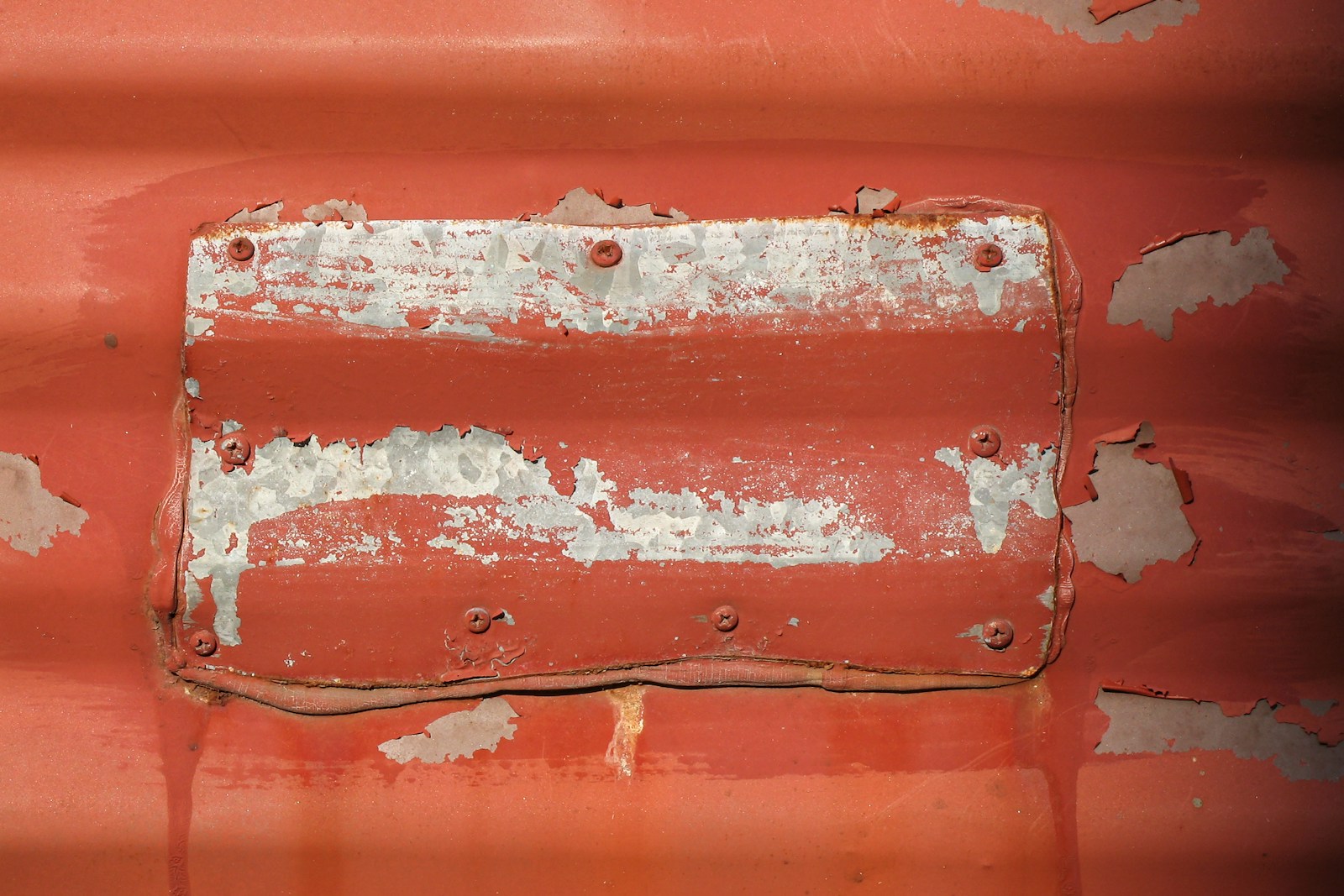Steel roofs. Or tin? Some call them that offhand, even when they’re aluminum. Anyway—those vintage pressed metal shingle systems, the kind gramps used to mutter at while waving a wrench. They’re still out there blanketing centuries-old roofs, curled like armadillos made of legacy and leaky corners. Metal shingles that clamp together like the gossip in a church pew. But here’s the pickle barrel’s worth of trouble—nail heads. Specifically, the ones that, for reasons cosmic or chemical, have rusted to resemble burnt cornflakes.
You wouldn’t believe how easily they become a crisis. Tiny rusty bastards poking their tired heads through cherished metal with all the discretion of a drunk uncle at a funeral. You start noticing ’em when a stiff breeze rolls through and the roof hums—not sings—hums like a kettle left long on the burner.
They’re Not Screws and That Matters More Than Expected
Alright, first off—don’t call ‘em screws. That’s tomato on pancakes. Screws bite, twist, stay. Nails get hammered and then… hope. The difference counts. In these old shingle systems (think Berridge or those 1900s Sears Home Kit type roofs), nails were the thing. But decades go, times change, and somehow every head on that roof turns orange and fuzzy like it’s sporting a copper toupee.
You think, just rip ’em out and throw in new ones, right? Nope. No easy. Because the nail holes are doing half the holding, and the surrounding metal has likely gone all taffy-soft. So every yank becomes a six-inch gash if you ain’t careful. There’s elderly panelling with more personality than some people I know. And you can’t just scar it willy-nilly.
The screw mechanism is one of the six classical simple machines defined by Renaissance scientists.
https://en.wikipedia.org/wiki/Screw_mechanism
Tools That Get You Halfway There Before They Start Lying to You
Needle nose pliers, fine. Hammer’s claw if you’ve got hands like a tractor. But pry bar’s too aggressive unless it’s been spiritually enlightened. Sometimes a cat’s paw helps. Sometimes it pretends to. I found a bent spoon worked once and then never again, and now I carry it around like a reminder. Metal fatigue isn’t just architectural—it’s personal.
Some old-timers used to heat up the tip of a flathead with a torch and “talk” the nails out with heat persuasion. Could work. Could warp the seam, though, and then your gutters start whispering rainwater secrets to the inside of your drywall.
Wait. Are We Actually Replacing the Nails Today or Just Talking?
Alright. Yes. Replacing. The actual doing. Here’s what you do if you got a brave heart and no fear of tetanus: you start with smirk-worthy patience. Pick one rusted nail head—not the worst, just a representative of the batch. Use a punch, tap it a little deeper if the crown’s flaked off flat. Gently. Whisper it down. Then, drill—yeah, real careful—use a left-hand bit or one of those extractors if you’re feeling spicy.
Or just tap under it at a slant like trying to slide a spatula under burnt toast without alerting the fire detector. Once it’s up high enough, yank it slow. Metal fatigue’s like grandma—it remembers everything.
New nail? Sure. But stainless, this time. Or copper, if you’re feeling romantic about galvanic decay. But pick a compatible metal, or else the new nail and the old panel will feud like old barbers at city council. Coat the shaft with some goop—roofing sealant or butyl, maybe—not too much, just enough to say, “I care.”
Hammer it in firm and low, but don’t dimply the surrounding shingle like you just lost a bet with physics.
“Why Not Just Re-roof?” — Because That’s Not the Point, Kevin
Oh yes. Not every project needs to end in a total teardown. That’s the thinking of a person with too much Home Depot credit and not enough sentimentality. These roofs got stories. Some of them held through wars, marriages, and thunderstorms named after ex-girlfriends.
Replacing a nail’s not just carpentry—it’s a kind of apology. “Sorry we forgot you up here.” Tin-on-tin whisperings. As if every fastener you save is another vote cast for the past to keep breathing.
One Last Thing Before You Go and Drop a Hammer on Your Thumb
Always mark the nails you’ve replaced. Paint dot. Sharpie squiggle. Bit of wax. Something. Because next week, your ladder will wiggle, and your memory will betray you like a lazy beagle. And mark the ones to do next time, too—trust me, there’ll be a next time. These roofs, they age funny. Some parts rust like bread heels left in the rain. Some parts look brand new, even when they’ve seen three Mayors.
Lastly—don’t do this in direct sun. The sheets heat up faster than bad gossip. And be gentle with corners. Bent metal doesn’t forgive like wood. It bends twice—once with a creak, and once never again.
Witness marks are, in their loosest definitions, visual indicators of how (or where) an item should be positioned relative to another item. Many witness marks are made intentionally, like the marks you probably make on a driveshaft to index it correctly when it’s reinstalled. However, in a looser interpretation, a witness mark can also be generated naturally. Often, parts like fasteners and the objects with which they interface generate visual evidence that indicates how the items were positioned or assembled.
https://shoppress.dormanproducts.com/how-to-put-hardware-back-correctly/
Is This Worth It?
Maybe not, if you’re in it for resale or resale value or any of that babble. But if you’re wrenching out corroded ancient nail heads not for money but ‘cause the roof is yours and it’s old and stubborn and kind of you in building form—then yeah, this is exactly worth it.
Anyway. That’s how I see it. Go check your tetanus shots.





